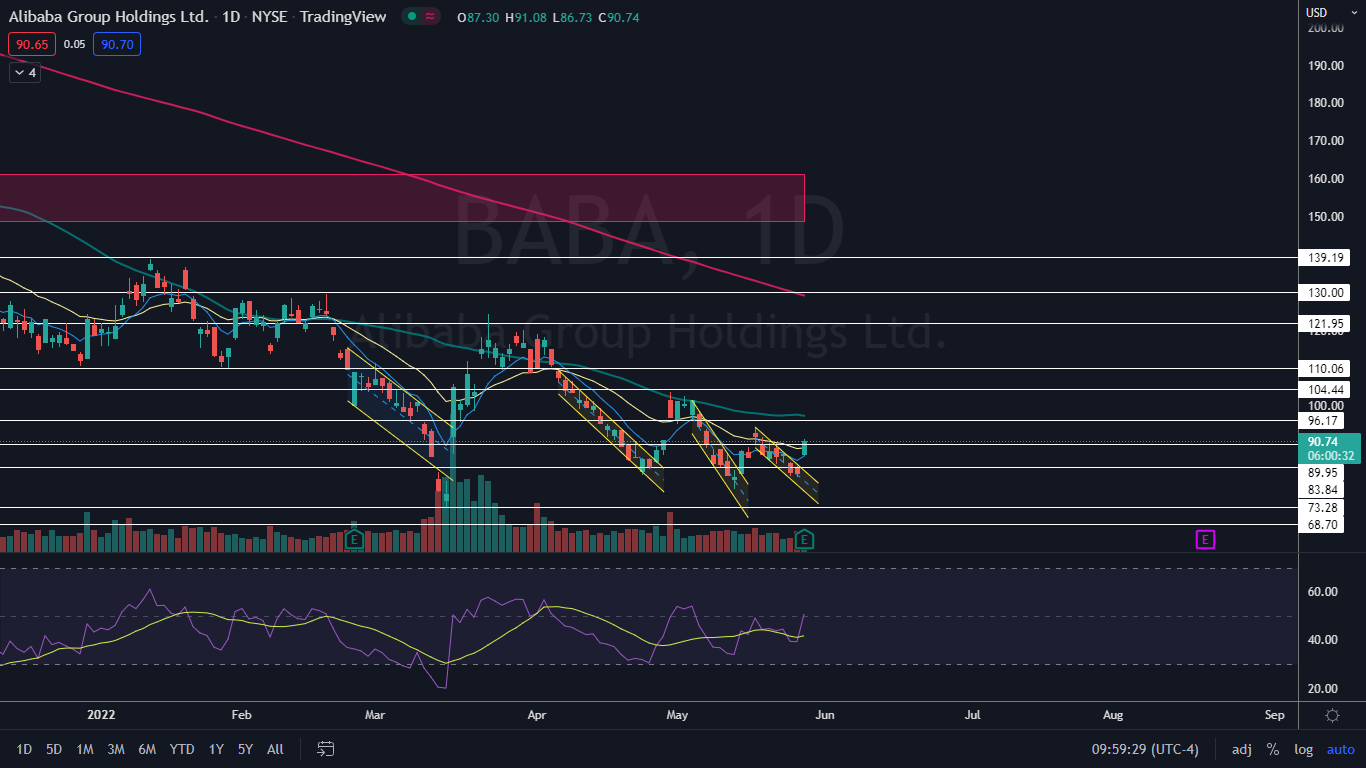
Alibaba Group Holdings, Inc (NYSE:BABA) gapped up over 5% off Wednesday’s close and was surging over 12% after printing fourth-quarter and full-year 2021 financial results.
For the quarter, Alibaba reported non-GAAP earnings per ADS of $1.15 on revenues of $32.19 billion, which beat the consensus estimate of $1.10 and revenues of $29.94 billion.
The Chinese multinational e-commerce company’s posted strong growth despite many months of regulatory crackdowns imposed by the Chinese government, as well as continued supply chain woes caused by the COVID-19 pandemic.
Alibaba has been heavily beaten down since reaching an Oct. 27, 2020 all-time high of $319.32, plunging 77% to reach a low of $73.28 on March 15 -- a level the stock hasn’t traded at since Feb. 29, 2016.
Although Alibaba has made some short-lived bull runs over the past two months, the stock has all but given its gains back each time, closing Wednesday’s session at $83.31. Although a long-term reversal to the upside seems unlikely at this point, considering the overall market conditions, Alibaba may be in for another bull run following its break from a falling channel pattern.
Want direct analysis? Find me in the BZ Pro lounge! Click here for a free trial.
The Alibaba Chart: The positive reaction to Alibaba’s earnings print caused the stock to break bullishly from a falling channel pattern. The pattern is considered bearish until a stock breaks up from the upper descending trendline, which can signal a reversal into an uptrend is in the cards. Alibaba has a history of trading in falling channels before breaking up from the formations.
- The gap up open caused Alibaba to regain support at the eight-day and 21-day exponential moving averages (EMAs), which is a good sign for the bulls. If the stock is able to close the trading session above the 21-day EMA and remain trading above it for a few days, the eight-day EMA will eventually cross above the 21-day, which would give bullish traders more confidence going forward.
- Although Alibaba has made the first sign of negating its downtrend, by forming a higher high above the most recent lower high of 90.17 printed on May 20, the stock will eventually need to print a higher low above Wednesday’s low-of-day, to confirm an uptrend. Bullish traders and investors can watch for Alibaba to potentially form a reversal candlestick, such as a doji or hammer candlestick, above that level to enter a position.
- Alibaba has resistance above at $96.17 and $104.44 and support below at $89.95 and $83.84.








